Why is there a white coating on the dishes after the dishwasher and what to do?
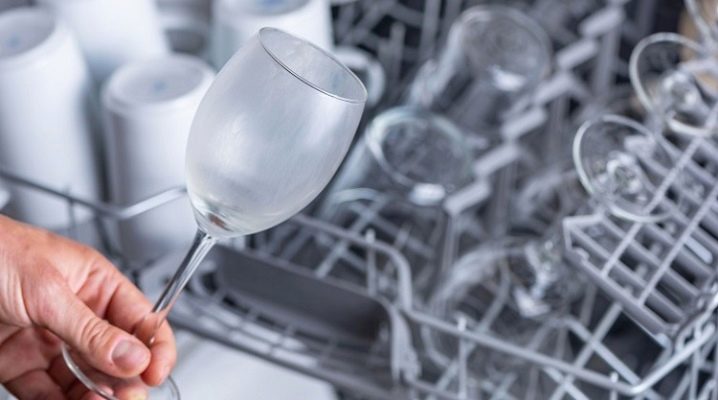
A dishwasher saves you a lot of housework, but sometimes owners have problems. A common nuisance is the appearance of a white coating after washing dishes. This does not always indicate a breakdown of equipment, so first you need to understand the situation - it may be possible to solve the problem on your own, without resorting to the help of a master.



Root causes and diagnosis
White plaque after washing is clearly visible in a Teflon-coated pan or on the walls of plastic dishes, but it is also easy to see it on other objects, so the appearance of precipitation can be immediately noticed. It is worth looking into the inside of the device - there may also be stains on the walls of the chamber or on the lid. In addition, in some cases, you may find accumulation of dirt and grease if the machine does not wash the dishes well.
If you recently purchased the equipment and managed to run only a few cycles, or even turned on the device for the first time, then there is a high probability that this is not an internal breakdown.
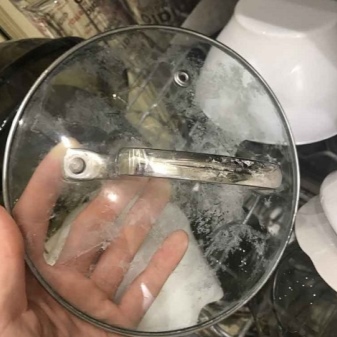
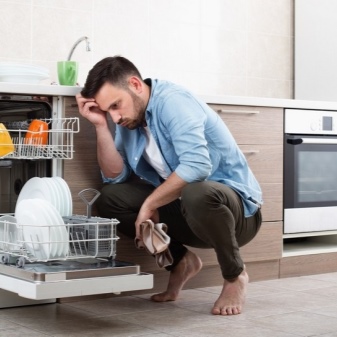
It is recommended to start diagnostics with the following steps.
- Check the detergent. It may be of poor quality or simply unsuitable, for example, 3 in 1 tablets on a short program do not have time to dissolve completely, so a plaque forms.
- Choose the correct dosage of the product. If there is too much of it, it leaves streaks.
- Estimate the hardness of the water... Calcium and magnesium values must be low for good cleaning. Very often, after the dishwasher, a white coating appears on the dishes precisely because of the poor quality of the water.
- Check the pressure level in the pipeline. Open the tap - if a thin stream is running there, then the pressure has dropped. The water is not supplied in sufficient quantities, so a plaque remains after the dishwasher.
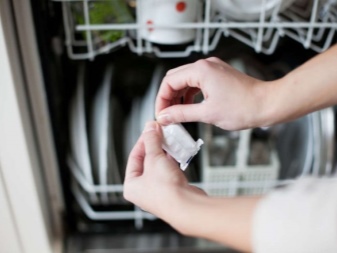
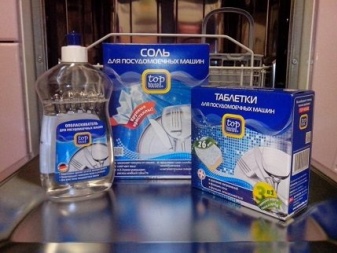
One-time pressure drops can be waited out and the washing of dishes can be postponed for a while, but if such situations occur frequently, then you should think about additional measures. Sometimes the problem is solved by cleaning the filter in front of the meter. If this does not help, you will have to install a pump that increases the pressure, or a mini-station with a storage tank so that the dishwasher can receive a sufficient amount of water.
If the machine has served you for a long time, there is a possibility that some part has become unusable.... The technique breaks down over time, but some malfunctions can be eliminated at home by performing minor repairs. However, in this case, it will not hurt to first make sure that the water pressure is sufficient or that someone from the household did not accidentally confuse the compartments for detergents.
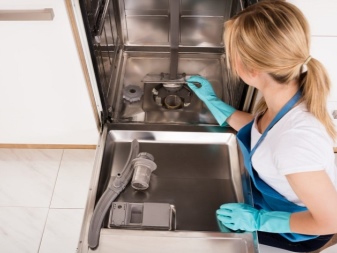
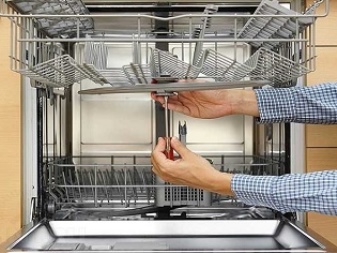
Often technical problems can be related to:
- with clogged filters;
- malfunction of the water sensor;
- failure of the ion exchanger;
- jammed cover.
It is recommended first of all to pay attention to these parts and check their condition if you are convinced that the malfunction is connected precisely with an internal breakdown.
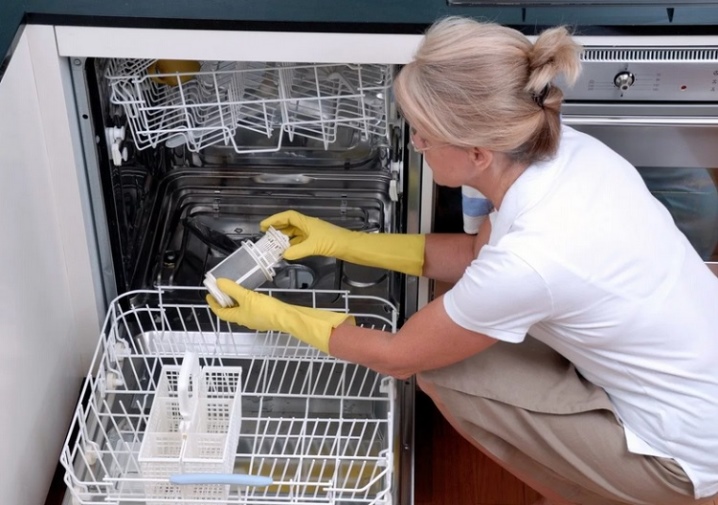
How to deal with the problem?
If limescale appears on glasses and plates, as well as on the walls of the chamber, you can get rid of it on your own. The main measures are related to the control of water hardness, as this is the most common cause of stains on glass. There are special salts that help remove plaque. They soften the water so that deposits do not build up on glassware.
If the dishes are suddenly coated, it could be the new detergent. To remove unpleasant stains, it will be enough to choose the optimal composition. Also, strong pollution can signal the need for equipment repair.
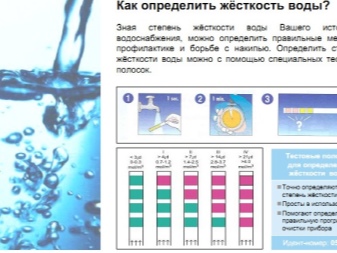
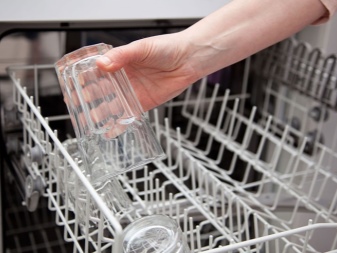
Water hardness control
It happens that the quality of the liquid deteriorates over time - this is due to the wear of the pipes at the common station. Even if initially the water hardness was acceptable, it is worth checking the indicators. Some machines have special test strips for this, or they can be purchased separately. In addition, water characteristics can be found on the website of your management company or on the Mosvodokanal page if you live in Moscow.
The problem of excessive hardness can be solved by installing a filter, but this is costly, so most owners use a special regenerating salt. It softens water and prevents limescale build-up. All modern models have a salt container, usually located at the bottom of the device. The agent must be poured there and the supply level must be adjusted taking into account the water parameters.
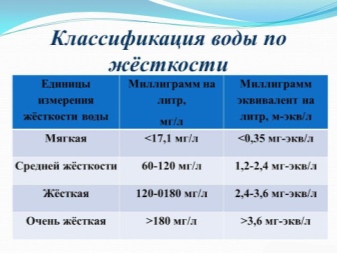

An important point: if there is salt, but the settings are incorrect, then plaque may still appear, therefore everything should be carefully adjusted using the manufacturer's recommendations, which are in the instructions for the machine. Also, do not forget to add the product on time. Many dishwashers have indicators that indicate when the salt is low. Although the appliance can work for some time without regenerating additives, over time, the appearance of plaque is inevitable if the water is hard.
Also, streaks can appear due to improper filling if salt somehow gets into the chamber. To make sure this doesn't happen, check:
- the lid on the salt container - it should fit snugly;
- the integrity of the body - small grains can penetrate through cracks.
In addition, the reason may be inaccuracy, if someone spilled salt on the bottom of the chamber or mixed up the containers and put this product in the powder compartment.
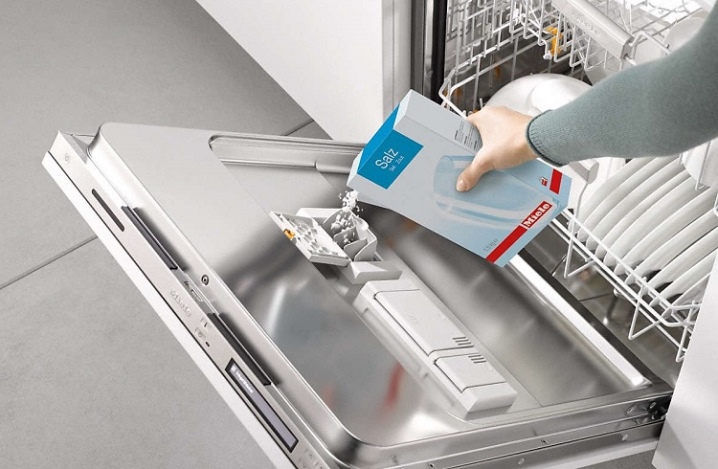
Detergent selection
You should not save on household chemicals - you may encounter the appearance of white deposits. If you are buying a product for the first time, it will be useful to look for reviews about it, as well as choose products from well-known manufacturers with a good reputation. Additionally, dosage or format issues can be problematic:
- 3 in 1 tablets are not suitable for all machines, they also do not completely dissolve with a short wash cycle;
- do not use too much product - this will not improve cleaning, but, on the contrary, will lead to the appearance of those very stains;
- before starting, you need to make sure that the powder compartment lid is tightly closed and nothing will leak out.
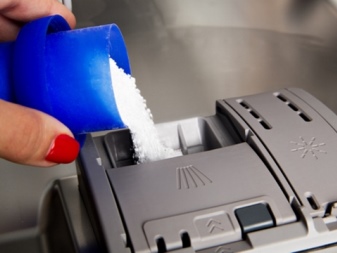
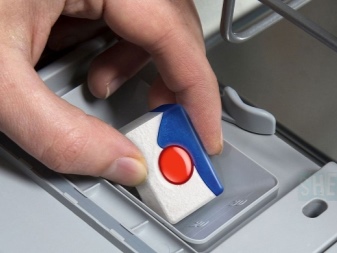
In terms of format, powders are the most affordable and handle stains well, but can damage some types of coatings and leave streaks if the dosage is too high. Gels do not have abrasive particles and are easily washed out with water, while they clean the surface with high quality. The tablets are easy to use, but not suitable for all devices.
If you are using powder, then you will need additional rinse aid. It is necessary to remove residual detergent and get a shiny, streak-free surface. That is why the rinse aid must also be of high quality - traces on the dishes can also appear through its fault, if it does not cope with its task.
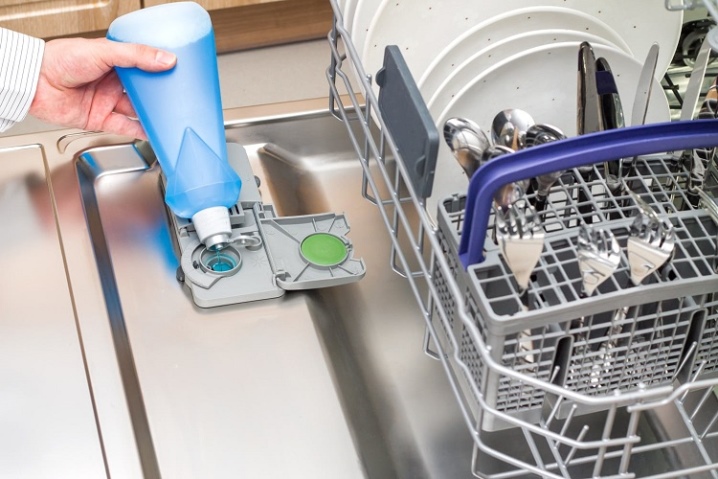
Repair of equipment
Among internal problems, the most common problem is clogged pre-filters and fine filters. This slows down the drainage of water, and streaks may appear. Failed filters will need to be changed. If you have the skills, you can do this at home by purchasing parts that fit your model. Also, in addition to replacing filters, you will need to clean the inside of the car itself. For this, special means are used that wash out the accumulated sediments.Cleaning must be started with a high temperature wash program.
The water hardness sensor may be defective. Not all dishwashers have it, but more expensive models usually have such a detail. The sensor itself determines the quality of the water and the required amount of regenerating salt, so the owner does not need to adjust anything manually before starting, the flow is controlled automatically. Breakdowns will interrupt the loading of the emollient and eventually build up plaque. The problem is solved by replacing the sensor.
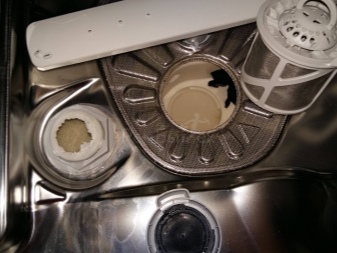
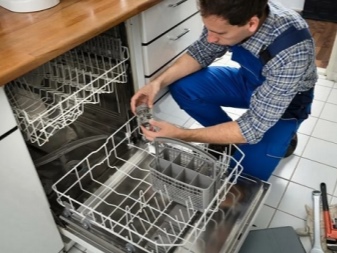
Sometimes the lid of the salt container gets stuck in dishwashers. This happens even with new technology - in inexpensive Chinese models, the elements do not fully fit together. Such a cover can be filed a little so that it closes tightly, but if a crack or chip appears, then the part will have to be changed.
The most unpleasant breakdown is a failed ion exchanger... It is not cheap, so repairs will be expensive. The mechanism can break if the wrong salt is used or not used at all.
Problems are also possible if the machine is started with a damaged water hardness sensor.
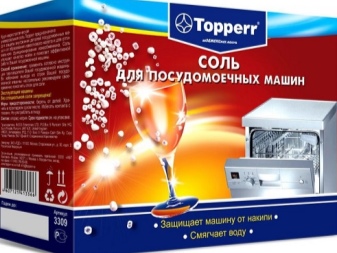
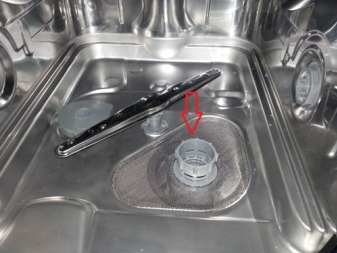
Prevention measures
Any equipment needs timely maintenance - this significantly extends the service life. Taking care of the dishwasher is not too difficult, the main thing is to do it regularly.
- Check and clean the drain filter and spray nozzles about 2 times a month... With intensive use, they can become clogged with food debris, which leads to malfunctions.
- Run a dry cycle every six months by adding a special dishwasher cleaner. This will remove all internal deposits and dirt.
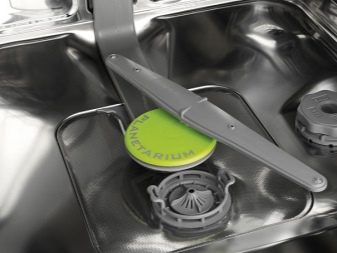

It is important to follow the operating rules.
- Do not load too many dishes, otherwise, it may not be completely washed out.
- Choose suitable mode for different types of cutlery so that there are no problems. Usually the manufacturer indicates all the necessary recommendations in the instructions.
- Plates and cups you need pre-clean from food debris, otherwise debris can accumulate inside the machine and get hammered into the technical holes.
- Pick up correct dosage detergent - you can use a measuring cup to make sure you don't make a mistake, and don't forget to use regenerating salt.
- If the water readings are very poor, it is recommended install additional filters in the systemso that the equipment does not wear out prematurely.
If you follow the rules of operation, the dishwasher will work properly for a long time. Simple preventive measures will eliminate white bloom and the need for repair.
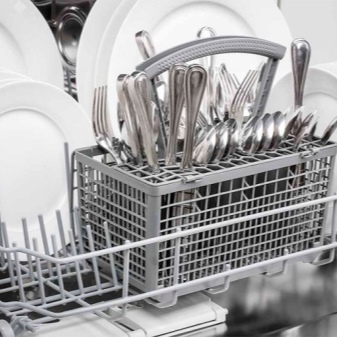














The comment was sent successfully.